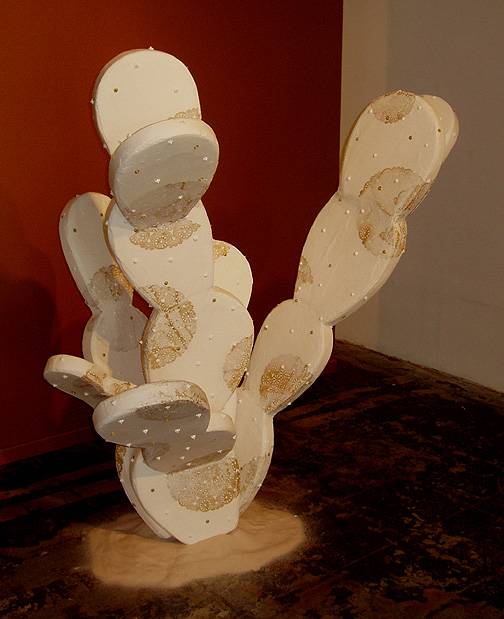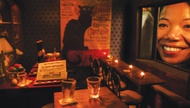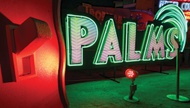Visiting Tarissa Tiberti’s 3% exhibition at the Fallout Gallery, the phrase “you can’t go home again” is hard to shake. Especially considering home is a landscape in constant flux.
Las Vegas born and bred, the artist left the city almost 10 years ago for college and an MFA at Michigan’s Cranbrook Academy of Art. After several years in New York, Tiberti returned in the last year to direct the Bellagio Gallery of Fine Art. With 3%, the sculptor extends the scope of her engagement with the local arts community beyond the role of gallery director. In a series of sculptures and photographs, she offers a contemplation on the return to the landscape of her birth as only an insider with an outsider’s point of view might.
The Details
- From the Calendar
- Tarissa Tiberti’s 3%

- Through January 2
- Wednesday-Saturday, noon-4 p.m. and by appointment
- The Fallout Gallery
- 1551 S. Commerce St., 269-3111
- The Fallout
Tiberti’s homecoming is sweet on its surface. “I aspire to confect and ornament objects to create environments that are alluring to the senses,” maintains her statement. Confectionary it is, and any fan of the Food Network’s Ace of Cakes will be enamored. Immediately greeting visitors is what looks to be a large pear cactus, entitled “Dunes,” silhouetted by a bronze wall. Cacti, while undeniably beautiful, are still desert vegetation, and have an association of stark solitude and occasional menace. The golden background grants overall warmth to the presentation, while the “cactus” itself is a lure. How so? The twist comes in the fabrication: The artist uses cake-decorating techniques to ornament the surface. The form looks like a real cake, covered in icing and curlicues and papered with the occasional decorative doily.
Adjacent to “Dunes” is “Landmark,” a cluster of sequoia cacti. Their stately forms are tempered by fluttering white ribbon running along what would be prickly edges. The luscious texture of icing again covers the surfaces, with nice peaks and valleys to add to the overall visual appeal. The wallpapered walls defining this clustered corner further elaborate the decorative aims of the artist—an ancien regime drawing-room tableau for wayward cactus cakes.
A third grouping of golden barrel cacti, equally ornamental in icing and ribbon, is not quite as successful as the other two, but its title (“Stardust”) does much for an overall consideration of the work. Each piece is named for a casino-resort that has fallen prey to Strip expansion. Is this the candy-coated memory of a long-lost architecture? Or a reflection of the sweet surface enticements of a city that runs on instant gratification and the intoxication of the lure?
An insider who spent many years negotiating the outsider’s perception of America’s grown-up playland, Tiberti is perhaps also toying with those (often incorrect) assumptions. Either way, the overall sense is fun, and the irreverent materials tease more monumental notions of sculpture.
Quite different—and far more interesting—are a series of three “Sand Globes,” each consisting of a large dome containing what appears to be a collapsing slice of wedding cake on a bed of sparkling sugar sand. The cake forms are smothered in icing-pattern swirls and curls, unable to bear the weight of their ornament. While the other pieces are fairly straightforward, the “Sand Globes” are entirely ineffable—which makes them so compelling. The alluring cake/icing/sugar combo is more lethal when confined behind glass. You want it, but you can’t have it, so it’s that much more desirable.
Of course, there is the direct snow-globe reference, but these landscapes are like nuclear winters. Is this a memory or a future? Reified (or maintained?) behind protective glass, the forms cannot help but topple. This is the show’s best work.
The exhibition is not without problems: The series of cactus tableaux is a bit disconnected spatially, and the work occasionally suffers from the layout of a challenging space. But the general experience is terrifically promising—a return to the fold for an artist who will bring a fresh and arguably vital dimension to the visual dialogue.







Previous Discussion: